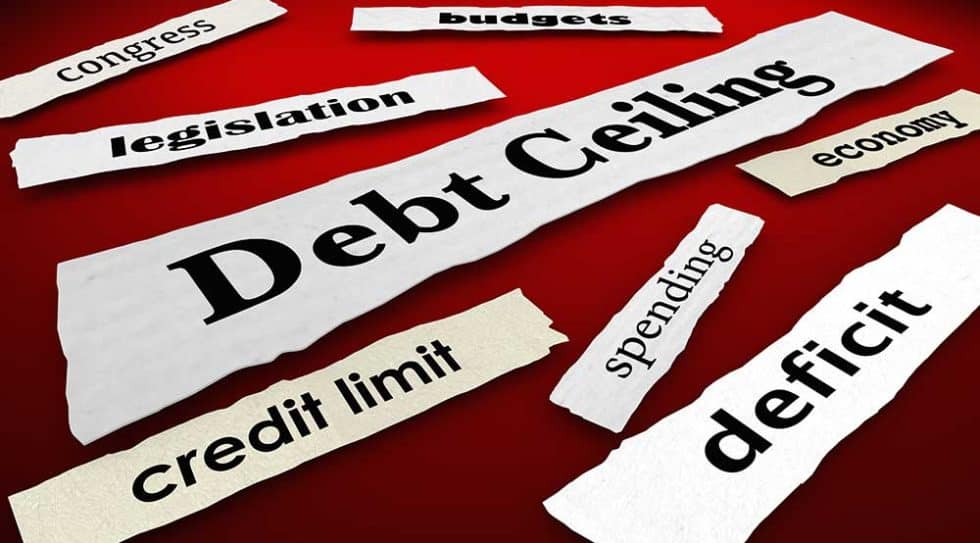A Historical Perspective and Future Assurance
As the debate about the U.S. debt ceiling heats up in Washington, it is essential to understand the historical context and the reasons why, despite occasional brinkmanship, the government is not likely to default on its obligations.
Historical Context
The concept of a national debt ceiling dates all the way back to 1917, when the Second Liberty Bond Act was passed. This delineated aggregate limits on federal debt. However, the modern version of the debt ceiling, which was established in 1939, caps the total amount of money the U.S. Treasury can borrow to meet existing legal obligations. Since then, the debt limit has been adjusted — upwards or downwards — 98 times.
Throughout this history, despite political contention and uncertainty, the U.S. has never defaulted on its debt. This is not due to luck but rather the understanding of the severe implications a default would have on the U.S. economy and the global financial system.
Implications of a Default
A U.S. default would potentially trigger a monetary crisis far surpassing the 2008 Great Recession. Most investors consider American Treasury Securities to be the safest investment vehicles in the world. A default would shatter this perception, leading to potentially drastic increases in borrowing costs for the U.S. and a likely downgrade of the nation’s credit rating, as almost happened in 2011 during a particularly tense debt ceiling standoff.
Moreover, a default could cause significant harm to both the domestic and global economy. In a report on the 2013 debt ceiling crisis, the U.S. Treasury warned of a potential “financial crisis and recession that could echo the events of 2008 or worse.”
Why a Default is Unlikely
Despite the rhetoric that often surrounds the debt ceiling, it is important to understand that raising it does not authorize new spending. Instead, it allows the Treasury to pay for expenditures Congress has already approved. As such, lawmakers, regardless of their party, have a responsibility to prevent default.
In past debt ceiling debates, lawmakers have often waited until the last minute to raise the limit, but they have always done it. This is because many, but not all our elected officials in Congress understand the catastrophic consequences a default would have.
There are also legal arguments suggesting that, in the worst-case scenario, the President could invoke the 14th Amendment, which states, “The validity of the public debt of the United States…shall not be questioned.” While this has never been evaluated in the courts, it suggests to most of us a constitutional obligation to avoid default.
In addition, the U.S. Federal Reserve has tools at its disposal to extend the Treasury’s ability to pay its bills for a brief period, known as “extraordinary measures.” These measures, which were utilized during the 2011, 2013, and 2020 debt ceiling crises, can provide some additional time for Congress to act.
Conclusion
The U.S. debt ceiling, while a significant political talking point, does not pose a substantial risk of default on U.S. obligations. The ceiling has been raised repeatedly throughout history, as lawmakers understand the severe economic consequences of a default.
However, the recurrent political brinkmanship over the debt ceiling does pose risks, including financial market volatility and potential damage to the nation’s creditworthiness. Therefore, a more permanent solution to this issue, like automatic adjustments of the debt ceiling in line with expenditure decisions, could be an avenue worth exploring for lawmakers.
Nevertheless, based on historical precedent and the mechanisms in place to prevent such an occurrence, the U.S. government is not likely to default on its debt.
Sources:
Austin, D. Andrew, and Mindy R. Levit. “The Debt Limit: History and Recent Increases.” Congressional Research Service, 2013, https://fas.org/sgp/crs/misc/RL31967.pdf.
Second Liberty Bond Act of 1917, Pub.L. 65–43, 40 Stat. 288, enacted September 24, 1917.
Public Debt Act of 1939, Pub.L. 76–201, 53 Stat. 1149.
U.S. Department of the Treasury, Bureau of the Fiscal Service. “TreasuryDirect: Historical Debt Outstanding – Annual 1900 – 1949.” https://www.treasurydirect.gov/govt/reports/pd/histdebt/histdebt_histo1.htm.
U.S. Department of the Treasury. “The Potential Macroeconomic Effect of Debt Ceiling Brinkmanship.” 2013, https://www.treasury.gov/initiatives/Documents/POTENTIAL%20MACROECONOMIC%20IMPACT%20OF%20DEBT%20CEILING%20BRINKMANSHIP.pdf.
U.S. Constitution, Amend. XIV, Sec. 4.
U.S. Federal Reserve Bank Services. “Treasury’s ‘Extraordinary Measures’ and the Debt Limit.” Last updated 2020, https://www.frbservices.org/resources/resource-centers/fed-invest/debt-ceiling.html.
GAO Report to the Congress. “Debt Ceiling: Analysis of Actions During the 1995-96 Crisis.” February 1996, https://www.gao.gov/assets/230/222656.pdf.
Helping You Build a Firm Financial Foundation For Your Future
Nico F. March is the Managing Director for The March Group, LLC. He has worked with Community Associations since 1974 and has served on several Boards, including the Board of Directors for the Community Association Institute (CAI), San Diego Chapter. His team has specialized in Corporate Cash and Association Financial Management since 1982 and has assisted over 1000 Associations, Nonprofits and Timeshares invest over $4 Billion in reserve, operating and reconstruction funds. Nico and his team work out of their San Diego and Wyoming offices and may be reached at 888.811.6501 or email [email protected] for further information and consultations.
The March Group is not a tax or legal advisor. We will be glad to work with your professional CPA and Attorney to help you with your financial goals. Neither the information contained herein nor any opinion expressed shall be construed to constitute an offer to sell or a solicitation to buy any securities mentioned herein. Securities offered through LPL Financial, Member FINRA/SIPC.
The opinions voiced in this material are for general information only and are not intended to provide specific advice or recommendations for any individual or organization.
LPL App438240-1



